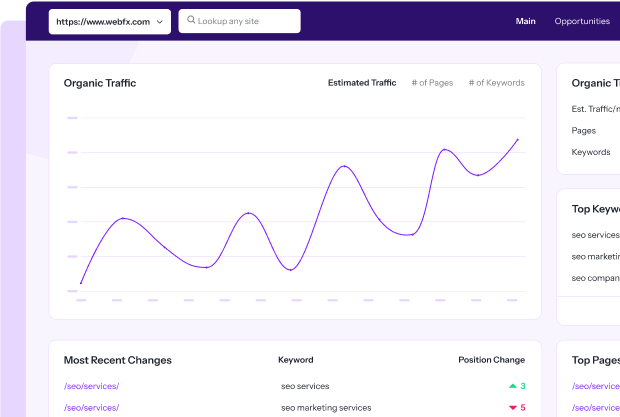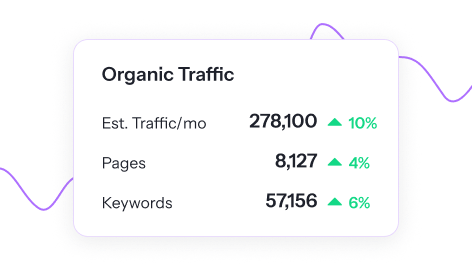What is keywork density, prominence, and proximity?
Keyword density, prominence, and proximity are SEO terms that describe how many times a keyword appears and where it’s located on a page. They play an important role in signalling to users and search engines what your page is about, thus impacting your page’s rankings.
Keywords are one of the most well-known — and most-discussed — SEO ranking factors for good reason. Keywords form the foundation of your SEO strategy, and they’re an essential signal to Google about your page’s relevancy to the searcher.
While researching the best ways to integrate keywords into your pages, you might have heard a few terms floating around:
Not sure what all those terms mean? We’ve got you covered! Continue reading for an easy-to-understand explanation of keyword density, prominence, and proximity.
What is keyword frequency?
Keyword frequency means the number of times your target keyword appears on the page. While you want your keyword to appear enough that search engines can tell your content is relevant to the search term, you want to stay clear of keyword stuffing.
Keyword stuffing is a shady SEO tactic in which someone will fill the page with as many keywords as possible, even if it doesn’t make sense in context. Stuffing your page with keywords makes it harder to read, and search engines can usually tell if you’ve done it.
Ultimately, search engines want to show pages that are helpful to users, so you should always optimize with your target audience in mind. If you’re creating relevant, informative content, you’ll likely include your keyword naturally within your text. Just make sure it flows and it’s readable.
What is keyword density?
Keyword density means the number of times your keyword is on the page relative to the page’s total word count. So, if you include your keyword three times on a 300-word page, you’d have a higher keyword density than if you included it five times on a 5000-word page.
With keyword density, it’s all about balance. Creating relevant content will likely mean mentioning the keyword throughout your content, but too often and you run the risk of keyword stuffing.
Consider this paragraph:
We sell durable rain boots for your everyday needs. If you’re looking for durable rain boots, look no further than Example Store. Come by our shop today for your durable rain boot needs.
It feels forced, and it doesn’t contain much helpful information. The three sentences feel redundant. Two of the sentences could’ve been used to contextualize the offer with more details, sale information, and so on.
The problem isn’t necessarily that the content mentions the keyword (durable rain boots) three times. It’s that those three mentions are crammed into a 30-word paragraph.
As with keyword frequency, the driving force here is the reader. Create relevant, helpful content for someone searching for the target keyword, and prioritize readability.
What is keyword prominence?
Keyword prominence refers to where your keywords are found on the page. Users often skim online content, which means the easier it is for them to see how relevant your content is to them, the more likely they are to stick around. Including your keywords in prominent places can help.
Recommended places to incorporate your keywords are:
- URL
- Title tag
- Headings and subheadings
- Meta description
- First 100 words
You can also include keywords in the header of your site’s HTML. These are known as meta keywords. They aren’t visible to visitors and indicate the keywords of your page. These places are often the most noticeable to a user skimming your page or deciding whether to click on it from the search results. Put your best foot forward and show them how relevant your page is to their needs right away.
What is keyword proximity?
Keyword proximity means how close the words in your target keyword phrase are to each other. This metric matters because, usually, you’ll target keywords that contain more than one word. Single-word keywords tend to be much more competitive, but long-tail keywords can be highly effective.
When targeting a phrase, you’ll want to keep the words in that phrase as close together as possible. This proximity can signal to search engines and users that the page is likely more relevant to the searcher.
Take the keyword “used fantasy books.” If a page promises “The Best Used Fantasy Books,” it’s likely more relevant to the searcher than a page that promises a “Huge Selection of Fantasy Books and Used Books.”
Use keyword density, prominence, and proximity effectively
While you’ll want to keep these keyword metrics in mind while creating content, remember that the user always comes first. Anytime you use a metric like keyword prominence or proximity, it should serve the user and help them better understand how your content meets their needs.
If you strike the right balance between keyword integration and valuable content, you’ll be well on your way to ranking higher in the search results.
P.S. Looking for more definitions of SEO key terms? Find the explanations you need in our ultimate SEO glossary!
Optimize Faster with SEO.com

Meet your new favorite SEO tool for keyword research and on-page SEO. SEO.com’s keyword research tool and site audit tool can help you find keywords and improve your keyword prominence faster than manual analyses.
Say 👋 To Your New Favorite SEO Tool
Pinpoint opportunities on your website faster and increase your visibility online with SEO.com!



Find Keyword Opportunities Faster
Keyword research doesn’t have to be complicated. Make it easier with SEO.com!

Find Keyword Opportunities Faster
Keyword research doesn’t have to be complicated. Make it easier with SEO.com!




